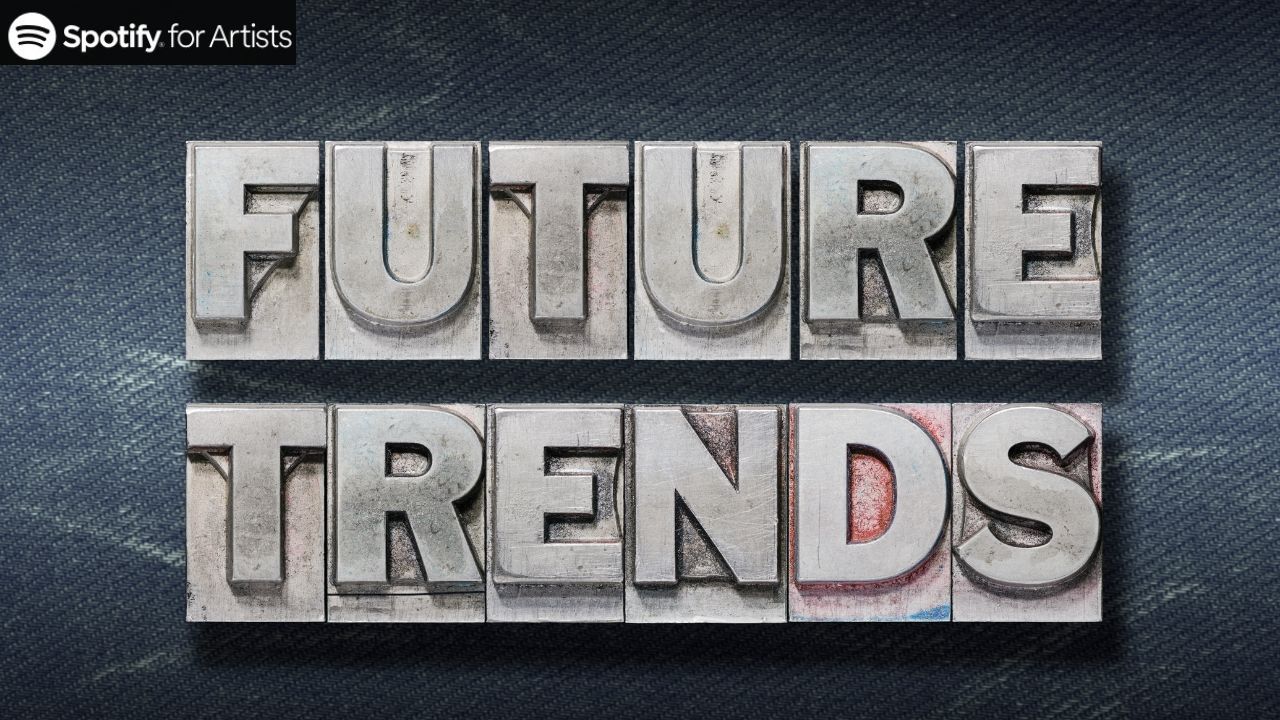The world of music distribution is constantly evolving, and one of the key players in this transformation is Spotify. As one of the leading music streaming platforms globally, Spotify has not only reshaped how we listen to music but also how artists distribute their creations. In this blog, we will explore the Future Trends in Music Distribution on Spotify and what artists and listeners can expect in the coming years.
The Rise of Streaming Services
Music consumption has shifted dramatically over the past decade, with streaming services like Spotify taking center stage. The convenience of having a vast library of music at one’s fingertips has led to a decline in physical sales and digital downloads. This trend is expected to continue, with streaming services becoming the primary mode of music consumption worldwide.
The Impact on Physical Sales and Downloads
With streaming services, users no longer need to purchase individual tracks or albums. Instead, they have access to millions of songs for a monthly fee. This shift has significantly impacted physical sales and digital downloads, which have seen a steady decline. As streaming continues to dominate, we can expect this trend to persist, further diminishing the market for physical media and digital downloads.
Personalization and Algorithm-Driven Recommendations
One of the most significant Future Trends in Music Distribution on Spotify is the use of advanced algorithms to personalize the listening experience. Spotify’s recommendation engine, which includes features like Discover Weekly and Daily Mixes, has become a favorite among users. In the future, we can expect even more sophisticated algorithms that can predict user preferences with greater accuracy, helping artists reach their target audience more effectively.
Enhancing User Engagement
Spotify’s focus on personalization not only enhances user engagement but also benefits artists by increasing their visibility. As the algorithms become more advanced, they will be able to suggest new and lesser-known artists to users based on their listening habits. This will help emerging artists gain more exposure and build a loyal fan base.
Expansion of Artist Services
Spotify has been expanding its suite of services for artists, providing them with more tools to manage and promote their music. From detailed analytics to promotional tools, Spotify is empowering artists to take control of their music distribution. In the future, we can expect these services to become more comprehensive, offering even more support for independent artists.
Monetization Opportunities
One of the key areas of expansion for Spotify’s artist services is monetization. Currently, artists can earn money through streams, but Spotify is exploring additional revenue streams such as merchandise sales, virtual concerts, and exclusive content. These new monetization opportunities will provide artists with more ways to generate income and sustain their careers.
As social media continues to play a crucial role in music promotion, Spotify is likely to enhance its integration with platforms like Instagram, TikTok, and Twitter. This integration will allow artists to seamlessly share their music across different platforms, reaching a broader audience and creating more engagement.
Social media platforms are powerful tools for music promotion. By integrating with these platforms, Spotify can help artists amplify their reach and engage with their fans more effectively. For example, artists can use Instagram Stories to share their latest releases directly from Spotify, while TikTok challenges can help songs go viral.
Direct Artist-to-Fan Communication
Another exciting Future Trend in Music Distribution on Spotify is the direct communication between artists and their fans. Spotify is already experimenting with features that allow artists to send messages and updates directly to their followers. This trend is expected to grow, providing artists with more ways to connect with their audience on a personal level.
Building a Stronger Fanbase
Direct communication helps artists build a stronger and more loyal fanbase. By keeping fans informed about new releases, upcoming concerts, and other updates, artists can foster a deeper connection with their audience. This can lead to increased fan engagement and support, which is crucial for long-term success.
Enhanced Data Analytics
Data analytics is becoming increasingly important in the music industry. Spotify’s analytics tools provide artists with valuable insights into their audience’s behavior and preferences. In the future, these tools will become even more sophisticated, offering deeper insights that can help artists make informed decisions about their music and marketing strategies.
Utilizing Data for Strategic Decisions
By leveraging data analytics, artists can gain a better understanding of their audience and tailor their content accordingly. For example, they can identify which songs are most popular in different regions and plan tours or promotional activities based on this information. Data-driven decisions can help artists maximize their reach and impact.
Blockchain and Music Distribution
Blockchain technology has the potential to revolutionize music distribution by ensuring transparency and fair compensation for artists. While still in its early stages, there is growing interest in integrating blockchain with music streaming platforms like Spotify. This technology could provide a secure and transparent way to manage royalties and rights, benefiting both artists and listeners.
Ensuring Fair Compensation
One of the biggest challenges in the music industry is ensuring that artists receive fair compensation for their work. Blockchain technology can address this issue by providing a transparent and immutable record of transactions. This can help ensure that royalties are accurately tracked and distributed, reducing the risk of fraud and disputes.
Diversification of Revenue Streams
As the music industry evolves, artists are looking for new ways to generate revenue. Spotify is likely to explore new monetization options, such as exclusive content, merchandise sales, and virtual events. These additional revenue streams will provide artists with more opportunities to earn from their music and related activities.
Virtual Concerts and Events
The COVID-19 pandemic has accelerated the adoption of virtual concerts and events. Spotify is expected to invest more in this area, providing artists with a platform to perform live for their fans without the need for physical venues. Virtual events can reach a global audience and offer new revenue opportunities for artists.
The Impact of AI and Machine Learning
Artificial intelligence (AI) and machine learning are set to play a significant role in the Future Trends in Music Distribution on Spotify. These technologies can analyze vast amounts of data to identify trends and patterns, helping artists optimize their distribution strategies. AI can also be used to create personalized listening experiences, making music discovery more intuitive and enjoyable for users.
AI-Generated Music
AI technology is also making strides in music creation. While human creativity remains irreplaceable, AI-generated music can complement artists’ work by creating new sounds and enhancing production quality. This collaboration between human artists and AI can lead to innovative and unique musical experiences.
The Role of Playlists in Music Discovery
Playlists have become one of the most important tools for music discovery on Spotify. Curated playlists, both by Spotify’s editorial team and independent curators, help new and emerging artists reach a wider audience. In the future, playlists will continue to be a key component of music distribution, with more emphasis on personalized and niche playlists.
The Power of Editorial Playlists
Editorial playlists curated by Spotify’s team have a significant impact on music discovery. Being featured on a popular playlist can lead to a substantial increase in streams and followers. As Spotify continues to refine its playlist curation process, artists will have more opportunities to be discovered by new listeners.
The Growth of Podcasts and Non-Music Content
Spotify has been expanding its content offerings beyond music, with a significant investment in podcasts and other non-music content. This trend is expected to continue, providing artists with more opportunities to reach their audience through different types of content. For example, artists can create their own podcasts to engage with fans and promote their music.
Exploring New Content Formats
By diversifying its content, Spotify can attract a broader audience and provide more value to its users. Artists can experiment with different formats, such as podcasts, video content, and behind-the-scenes footage, to keep their fans engaged and offer a more immersive experience.
Sustainability and Ethical Considerations
As environmental and ethical concerns become more prominent, Spotify and other streaming services are likely to focus more on sustainability. This could involve initiatives to reduce the carbon footprint of streaming, as well as promoting fair trade practices in the music industry. These efforts will not only benefit the planet but also enhance the platform’s reputation among socially conscious users.
Green Initiatives in Streaming
Spotify has already taken steps towards sustainability by investing in renewable energy and reducing its carbon footprint. In the future, we can expect more green initiatives, such as eco-friendly merch options and partnerships with environmental organizations. These efforts will resonate with environmentally conscious consumers and contribute to a more sustainable music industry.
The Future of Live Streaming
The COVID-19 pandemic has accelerated the adoption of live streaming as an alternative to in-person concerts. Spotify is likely to expand its live streaming capabilities, providing artists with more ways to perform for their fans. This trend is expected to continue even after the pandemic, as live streaming offers a convenient and accessible way for artists to connect with their audience.
Hybrid Concert Models
As live events return, a hybrid model that combines in-person and live-streamed concerts is likely to emerge. This approach allows artists to reach both local and global audiences, maximizing their reach and revenue potential. Spotify’s investment in live streaming technology will support this trend and provide artists with the tools they need to deliver high-quality virtual performances.
Conclusion
The Future Trends in Music Distribution on Spotify are shaped by technological advancements, changing consumer behavior, and the evolving needs of artists. From personalized recommendations and enhanced data analytics to blockchain technology and new revenue streams, the future of music distribution on Spotify looks promising. Artists and listeners alike can look forward to a more personalized, transparent, and engaging music experience.
For further reading, explore these related articles:
- Do Artists Get Paid for Spotify Streams
- Understanding the Spotify Revenue Model for Artists
- How Spotify Works for Artists?
For additional resources on music marketing and distribution, visit Deliver My Tune.






